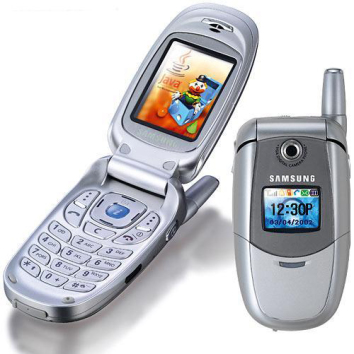Though the current generation may not remember, it was less than ten years ago that the fancy new phones on the market looked very different from the sleek smartphones of today: they were all flip phones. These days almost everyone carries an iPhone or Android phone with a large touch screen and high-quality camera. Smartphones have practically driven all other phones out of the market and the previous generation of phones have been left to the old and technologically un-savvy. But even as smartphones reach a zenith of popularity, there’s been a shift away from the phones of the future and towards an unlikely replacement: flip phones.
Why The Flip Phone?
Many people would rather lose a limb than give up their smartphone. That said, there are a number of qualities that once made flip phones charming that still hold some appeal. Flip phones are thin, lightweight, and very durable. Hanging up on someone on an iPhone just doesn’t have the same oomph as it does on an old Motorola Razr: there’s something to be said for the tactile satisfaction of slapping the phone closed. In addition, technology has given people a way to stay connected 24/7, but it’s also made staying connected all but a necessity, and people are starting to look for ways to break free of that cycle. Flip phones’ technological limitations—most of them can’t access Wi-Fi or browse the internet, and very few modern-day apps are supported on flip phones—could provide some relief.
The Tablet Theory
Another of the reasons that flip phones might be making a comeback is the overlap in technologies that has arisen with the increasing popularity of tablets. Take the iPad, for example. Hardcore Apple lovers will claim there’s a huge difference, but the tablet’s functionality is very similar to the iPhone’s, and the same apps and tools are generally available for both devices. It wouldn’t be the first time one technology has rendered its predecessor obsolete: just look at the slumping sales of iPods now that iPhones have largely taken over the music storage functionality. But as David Zax postulates in a piece for the MIT Technology Review, switching back to a flip phone could help break tech addicts of their bad habits.
A Fashion Statement
Rumor has it that the flip phone trend may have started when celebrities started being spotted using this old technology favorite. Avid followers of Anna Wintour spotted her peering at a flip phone at fashion shows, and Iggy Pop loves them for their durability. It’s not just older celebrities who are somewhat in love: even Millennials are following in the steps of their favorite celebrities and hopping on the bandwagon. According to Tim Walker reporting for The Independent, actress Jennifer Lawrence, the Hunger Games it-girl, and musical icon Rhianna are both shedding the cumbersome burden of high tech phones in favor of flip phones. As Doug Gross, a contributor to CNN, points out, hipsters often adopt retro trends in the name of irony, and flip phones are no exception.
Design Challenges
What will a return to flip phones mean for producers of cell phones? It could mean encouraging and training designers to come up with a new brand of flip phones, maybe even smart flip phones, to appeal to this new generation of consumers. There are many consumers, particularly older ones, who don’t feel comfortable using the small buttons and complicated features of the modern touch-screen devices currently available. A smart flip phone designed to be rugged and appeal to the low-tech crowd could do very well in the market considering the high number of broken iPhones. The next challenge? With any luck, phones that fit in women’s pants pockets.
